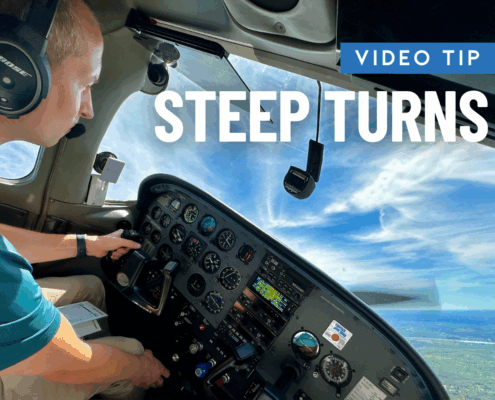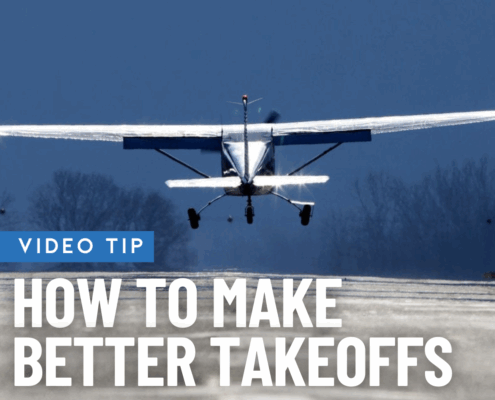
CFI Focus: How to fly a power-on stall in a Cessna 172
/
2 Comments
Join Sporty's Senior CFI Noah Frye in our new Flight Instructor Focus series, as he talks through how to fly the Power-On Stall in a Cessna 172. Noah breaks down each step of the maneuver and shares common student errors to watch for during training.

Video Tip: Flying Airplanes With Retractable Landing Gear
Many high-performance airplanes feature retractable landing gear that allows them to fly at higher speeds thanks to the reduced drag (and they look cool too). There are new operational considerations to learn when transitioning to this type of airplane, including the best time to raise the gear after takeoff and lower the gear before landing.

Video Tip: How to Handle Crosswinds During Takeoff
When planning for takeoff, it's best to choose a runway at the departure airport that is most aligned with the wind. Unfortunately, the winds rarely blow right down the runway, so you must learn how to accomplish takeoffs and landings under crosswind conditions. This week's tip looks at the control inputs required and performance implications when performing a crosswind takeoff.

Video Tip: How to Avoid Wake Turbulence From Large Airplanes
A hazardous phenomenon that all pilots learn to avoid when operating at airports is wake turbulence. This invisible turbulence is caused by a pair of counterrotating vortices behind an airplane's wingtips, generated whenever a wing develops lift.

Video Tip: Steep Turns
Whether you’re just starting out or have logged hundreds of hours, mastering steep turns is all about precision, coordination, and feel. In our latest video tip, we break down practical strategies to help you fly steeper, smoother, and safer turns every time.

Video Tip: Get a “Big Picture” Weather Briefing
Checking the weather is one of the few constants in aviation. All pilots do it, whether it’s a trip around the pattern in a Cub or a trip across the Atlantic in a Gulfstream. But merely getting a weather briefing isn’t enough; it has to be a good weather briefing to make the flight safer. So what exactly does a “good briefing” involve?

How to read a METAR aviation weather report (video tip)
One of the first aviation-specific weather products you’ll learn to use is called an Aviation Routine Weather Report, or METAR for short, which is an observation of weather conditions at an airport.

Video Tip: Magnetic Compass Errors
The magnetic compass is the only "self-powered", north-seeking instrument in the panel and you'll find one in just about every airplane. It's not a perfect instrument though and has some inherent errors due to its design and construction. This week's tip takes a look at when you're most likely to experience these errors and how to compensate for them should you ever need to rely on the compass for primary navigation guidance.

Video tip: Get to Know Your Altimeter
The altimeter is a flight instrument that provides accurate altitude information to pilots and relies solely on outside air pressure. This week's tip explores how the altimeter works, the various types of altitudes you need to know about and potential errors you may encounter while referencing the altimeter.

Video Tip: How to Make Better Takeoffs
The takeoff is one of the exhilarating parts of flying, but requires some basic knowledge of aircraft control and the airport environment. Here we'll look at a series of tips to help ensure each of your takeoffs are executed both smoothly and safely.
